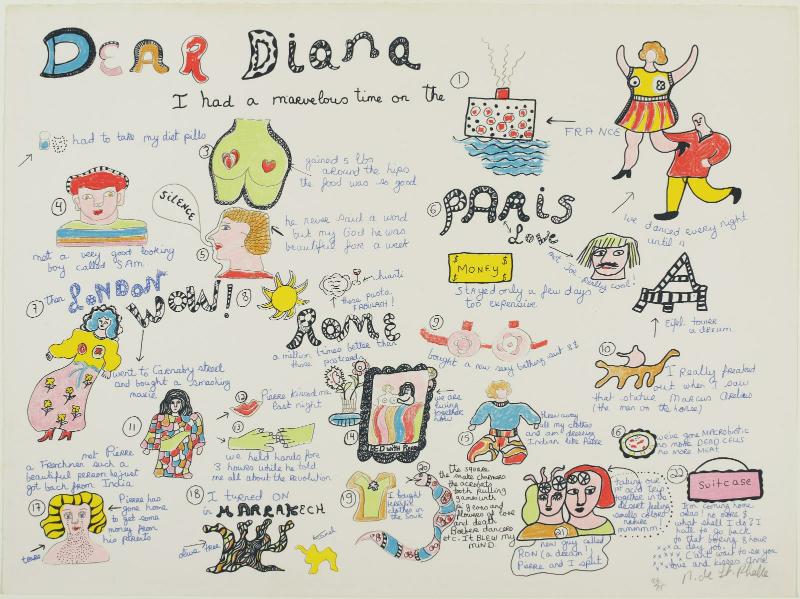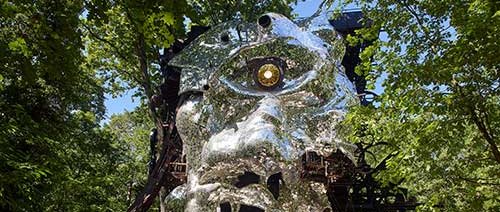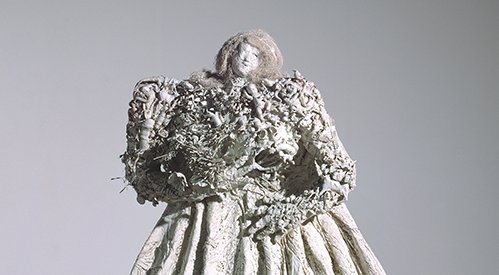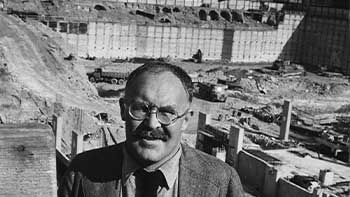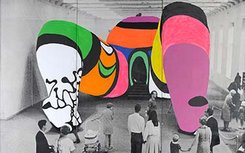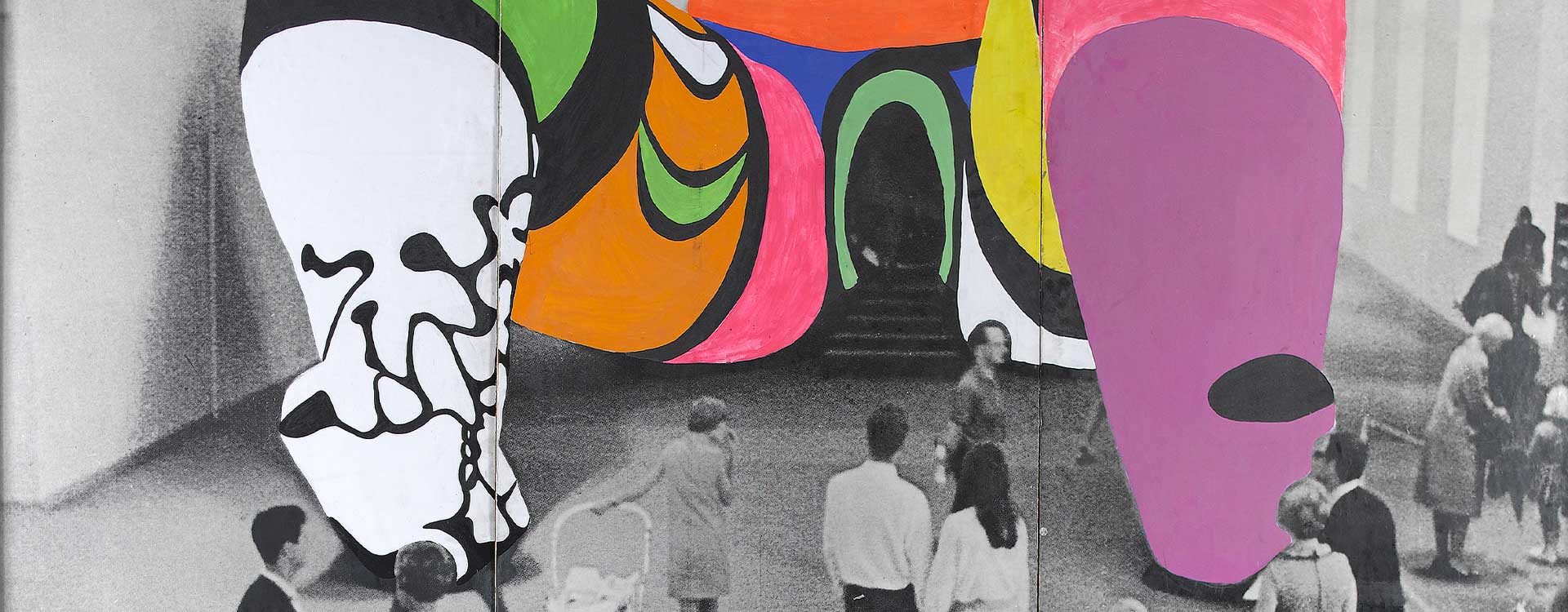
“Niki de Saint Phalle, Jean Tinguely, Pontus Hulten”: For the Sake of Love, Friendship and Art
It is through the lens of Pontus Hulten (1924–2006), the first director of the Musée National d’Art Moderne at the Centre Pompidou from 1977 to 1981, that the exhibition revisits the work of Niki de Saint Phalle and Jean Tinguely. Thanks to the impetus of this visionary figure, who quickly gained recognition in the museum world, both artists enjoyed significant visibility.
Driven by Rimbaud’s idea of “changing life” and guided by a radical, forward-thinking approach to museum practice, Hulten provided unwavering support to the artist couple. He shared their anarchist vision of art for all—multidisciplinary and participatory—challenging conventions and redrawing boundaries.
Thanks to the impetus of this visionary figure, who quickly gained recognition in the museum world, both artists enjoyed significant visibility.
Pontus Hulten facilitated the acquisition of major works by Niki de Saint Phalle and Jean Tinguely for public collections, and organised retrospectives for both at the Centre Pompidou—Saint Phalle’s in 1980 and Tinguely’s in 1988. He also oversaw the creation of their large-scale installation projects, both at Stockholm’s Moderna Museet—his first directorial post—with the monumental walk-in Nana, Hon – en katedral in 1966, and in Paris at the Centre Pompidou with Le Crocrodrome de Zig & Puce and its funfair elements in 1977.
It is also thanks to Pontus Hulten that Niki de Saint Phalle was able to complete one of Jean Tinguely’s lifelong dreams after his death: Le Cyclop, a towering, walk-in metal monster punctuated with works by artist friends and hidden deep in the woods of Milly-la-Forêt, near Paris.
The exhibition “Niki de Saint Phalle, Jean Tinguely, Pontus Hulten” offers a journey that is both historical and playful, where art, love, friendship, and commitment are interwoven, while also highlighting the utopian and provocative spirit shared by the three protagonists.
The richness of the Centre Pompidou’s collection, combined with major loans from national and international institutions, allows visitors to discover—or rediscover—iconic works by both artists. Tinguely’s animated machines, at times self-destructive and ‘useless’, deliver a biting critique of mechanisation and technological progress during the industrial boom of the Trente Glorieuses. Niki de Saint Phalle’s Tirs—white reliefs filled with pockets of colour that she would shoot to “make the painting bleed”—subvert both artistic and societal conventions, foregrounding feminine power. Her famous Nanas, colourful and exuberant, continue this iconoclastic approach.
The exhibition “Niki de Saint Phalle, Jean Tinguely, Pontus Hulten” offers a journey that is both historical and playful, where art, love, friendship, and commitment are interwoven, while also highlighting the utopian and provocative spirit shared by the three protagonists.
The exhibition also features rare archival films and an entire correspondence of illustrated letters surrounding the monumental works and projects of Niki de Saint Phalle and Jean Tinguely, carried out in close collaboration with Pontus Hulten. Beyond celebrating two major artists of the 20th century—driven by the vision of an exceptional museum figure—this exhibition explores their shared intellectual horizon, in which the call for artistic autonomy, the questioning of institutional frameworks, and direct engagement with the public serve as key drivers of creation. ◼
Related articles
In the calendar
Niki de Saint Phalle, Painted photography of Hon, 1979.
Niki Charitable Art Foundation, Santee, California
© 2025 Niki Charitable Art Foundation / Adagp, Paris
© Niki Charitable Art Foundation / Adagp, Paris
Centre Pompidou, MNAM-CCI/Philippe Migeat/Dist. GrandPalaisRmn
© Centre Pompidou, MNAM-CCI/Service de la documentation photographique du MNAM/Dist. GrandPalaisRmn
© Adagp, Paris
